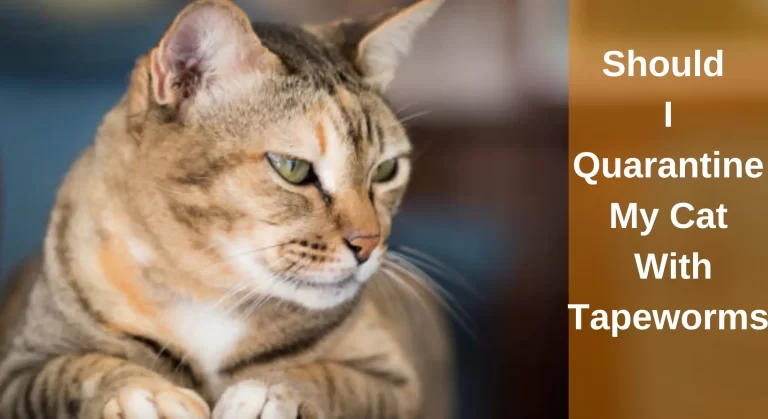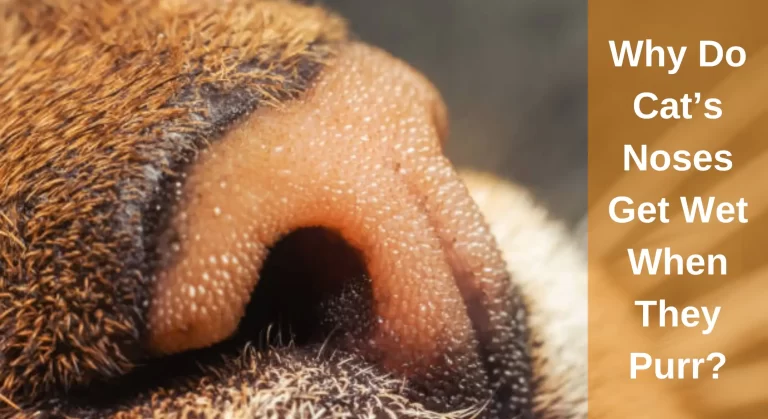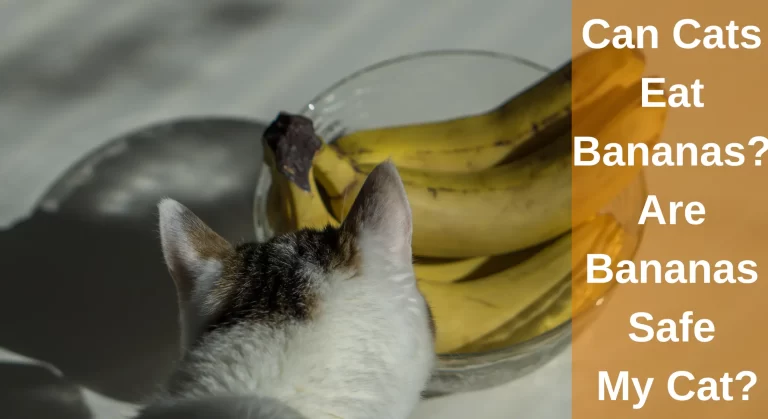How To Get Rid of Fleas in the House? [A Complete Guide]
Getting rid of fleas can be difficult due to their long lifecycle. Fleas can spread to pets through contact with other animals, outdoor exposure, or people bringing the insects inside on their shoes or clothing. They swiftly reproduce and are tiny and bouncy.
A clear symptom that your pet may have fleas is excessive scratching and itching. Even the tiny acrobats could be seen. Fleas may be seen with the naked eye and are typically about 2-4 millimetres long. Your home and yard will likely be a flea breeding environment if your family pet has fleas.
To avoid a severe infestation, it is important to take action as soon as you see fleas in your home or on your pet. To control fleas, make sure you vacuum and dust your house, wash all bedding, use topical flea treatments on pets, and use EPA-registered insect repellents.
It takes patience and persistence to deal with a flea infestation. Several options are available to get rid of the problem, including cleaning methods, sprays, and pet-friendly topical medications. Let’s dig into more details…
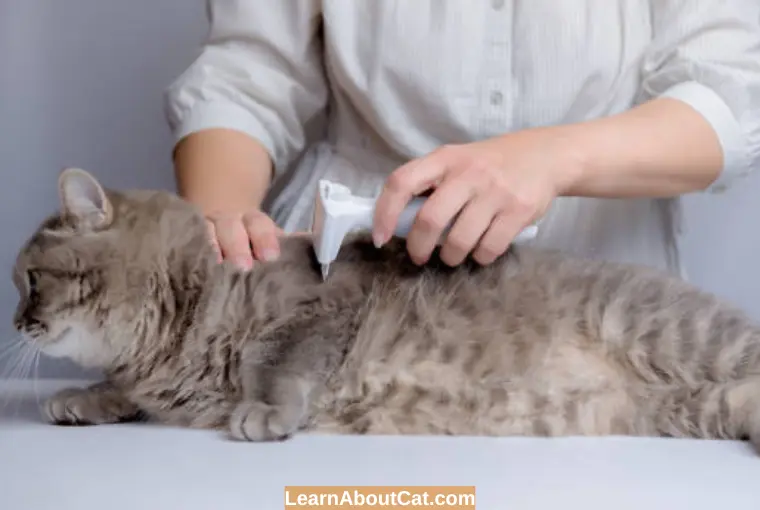
How to Tell If Your Cat Has Fleas? Signs of Cat having Fleas
The most typical indications of a flea infestation are:
- Licking, especially between the legs, the underside
- The term for dark particle debris is particulates of dark colour on the skin called Flea dirt.
- Biting or chewing on oneself
- Scratching the ears and the head
- Weight loss
- Weak or pale gums
- Excessive grooming
- Fur loss due to scratching and itching, especially on the top of the back
- Redness
How Long Does it take to Get Rid of Fleas in House?
Depending on your surroundings and how long the fleas have been there, it may take some time to eradicate a flea infestation. If adequately treated, they can be removed within 24-48 hours. Even with the most diligent method, it may take days or weeks for all fleas in a space to perish.
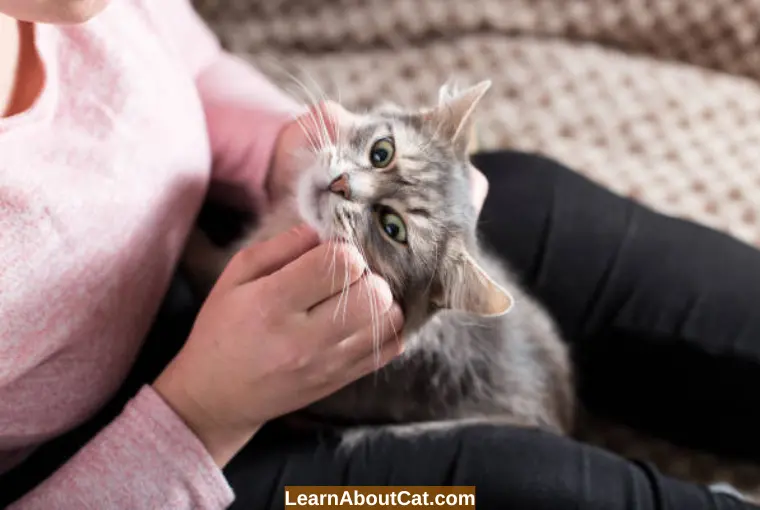
Fleas produce many eggs very fast, and certain flea species have evolved pesticide and drug resistance. If you have a big property or several dogs with fleas, it could take longer to solve the problem.
How To Get Rid of Fleas in the House?
Fleas are among the most aggravating bugs to fight with. They’re little, jumpy, & reproduce swiftly. Fleas are easily picked up by pets when they’re outdoors or when people drag in the pests with their footwear or clothing. Severe irritation and clawing are indications that your pet has fleas.
If your cat is a carrying transporter of adult fleas, your house may turn into a breeding ground. This signifies that to properly destroy the infection, you must attack it from all sides. Here, I’ve mentioned some effective ways to help you get rid of fleas from your home.

1. Clean Your House with a Vacuum
To get rid of fleas, use a vacuum having a spinning tip. Clean your house, paying special attention to areas where you detect “flea dust,” which are tiny black flecks of flea faeces. Use a tiny nozzle or brush nozzle to reach all of the small crevices in your house. Then, on every soft furnishing, use a brush tip.
Vacuum once every day while fleas are alive to get the best possible elimination. After vacuuming, remove its bag and throw it away from your house so that any flea can’t escape it.
2. Rugs and Furnishings Should be Steam Cleaned
Fleas lay around 40-50 eggs per day, which can quickly become an issue if not eliminated. But a steamer can solve this issue, so rub it all over those places where cats have contact or where flea dirt is present.
The warmth from the steaming wand kills any egg or larvae that have made their way deep into the fibres that vacuums can’t access. Do it one time per week; steam any carpeting or couches. Check the steamer on a tiny patch of carpets or couches to avoid staining.
3. Wash Your Bedding in Hot Water
Remove any comforters, sheets, couch coverings, or your pet’s bedding in the washing machine. Use your normal detergent and wash it on the highest heat level.
Next, use the warmest drying temperature that the textiles can withstand to guarantee that no insects survive. Wash your clothing once per week.
4. Apply Pesticide Spray to Specific Areas of Your Home
Insect killers such as methoprene or pyriproxyfen are powerful options to get rid of fleas. Treat your home’s carpeting, damaged regions, corners, and underfloor gaps.
These sprays restrict the growth of young fleas and don’t allow them to become fully mature, thus, killing them off prematurely. They normally persist between 2 and 6 months and don’t cause harmful effects to pets or children.
5. Use Essential Oils to Treat Trouble Spots
Essential oils are the most powerful flea repellents, such as cinnamon, clove, herbs, lavender, and redwood. Simply apply a small amount of concentrated essential oil to trouble spots. The fleas will die immediately when they contact it.
But essential oils shouldn’t be used around dogs because they may be poisonous and cause serious responses. To ensure that the essential oils don’t ruin your bedding or furnishings, test them on an unnoticed area first.
6. Comb your cat
A flea brush designed exclusively for removing fleas can be purchased at a pet store. Comb your cat’s fur thoroughly gently and inspect its teeth for any fleas.
To clean any black fleas from the brush, put it in soapy water. Must comb their neck back and tail base, the most common problematic locations in cats.
7. Hot, Soapy Water Should be used to Wash your Cats
Use any regular pet soap or buy any flea shampoo containing mild pesticides. Place your pet in the bathtub and wash it with hot water before massaging the soap in its fur.
Bathing your pets eliminates hair flaking and rotting flesh that mature fleas rely on, making it an effective prophylactic step.
8. Give your Canine Flea Medication
Call your veterinarian as early as you suspect your pet has lice to determine the most appropriate treatment choice. They may recommend an edible or spray medicine that kills fleas and stops larvae from developing. Read your veterinarian’s instructions to make sure that all fleas are removed.
You’ll most typically receive a “spot-on” procedure in which a local drug is applied to your pet’s neck so they can’t even reach or eat it. Your pet should be isolated from other pets to avoid spreading fleas throughout your house.
9. For a severe outbreak, Contact an Expert
Contact a specialist when you’re having difficulties controlling fleas in your house. They’ll easily evaluate the extent and cause of your flea infestation and apply more potent treatments to kill fleas.
How to Get Rid of Fleas Naturally in your Home? Home Remedies for Flea Removal
The techniques outlined in the previous section provide the most efficient way to eliminate fleas in your house, but most of you may be looking for some natural remedies that are free of toxic chemicals and easily accessible in your house to eliminate fleas. Fortunately, there are numerous home methods for flea elimination. Below you can see a few examples:

1. Diatomaceous Earth
It’s a non-toxic material formed from smashed sea creature remnants. Although it’s incredibly effective at destroying fleas, the food-grade composition is safe for both human beings and pets. Spread Diatomaceous Earth throughout your home, let it sit for 1-2 days, and thereafter clean it up.
2. Lemon Spray
Slice a lemon thinly, add some water to it, and boil it. Allow sitting night before transferring the mixture to a spraying bottle. This spray is fantastic for furnishings and upholstery.
3. Horse Apples
They are often known as “Osage oranges” and are considered the most effective home cures for flea removal. Horse apples help with your flea issue and don’t require any extra components. Simply cut the horse apples into halves.
Put the horse apples throughout your home where fleas are present and leave them for 2 months. The ideal technique is to buy fresh horse apples and let them dry completely.
4. Baking Powder
Baking powder is yet another good alternative, particularly for difficult places such as dense carpets. Fleas are killed by baking soda because they are dehydrated.
Rub baking soda on carpeting and furnishings to ensure that it reaches deeply into them. Allow it to sit for several hours before vacuuming the home to clean up the baking soda and fleas.
5. Salt
Salt operates in the same way as baking soda does. Spread it throughout your house, then clean it after 1-2 days to kill the insects.
6. Vinegar Mist
Fill a sprayer with 1/4 pure white vinegar and 3/4 water. Spray either 1 or 2 times a week on clothing and furnishings to destroy fleas.
How to Get Rid of Fleas in Yard?
You’re best off thinking about where fleas are most likely to hide if you want to get rid of them from your yard.
Fleas’ favourite hiding spots include:
- Shaded
- Humid
- Warm areas

Observe where your pet likes to rest and you are likely to find fleas in those areas. Direct sun-exposed areas are too hot, so you may find fewer fleas there.
Once you have determined your target zones, you may take the following actions to get rid of fleas:
- Do not overwater. This may produce the ideal humidity levels for fleas to flourish.
- Evict animals. These creatures, such as mice, opossums or squirrels, can be kept out of your yard without being captured or put to death. To urge animals to relocate, the Humane Society advises “gently irritating” them. This can entail erecting obstacles in the yard, hanging up bright lights, turning up the volume on music, and leaving rags soaked with cider vinegar.
- Mow your lawn and rake the exposed portions often. Fleas like to hide in tall grass. Instead of simply adding the items to your compost pile, bag them.
- The debris in flower beds and underneath shrubs should be removed, such as dead leaves and twigs. Make the shaded parts as visible to the sun as you can.
- Spread cedar chips in flower beds, beneath shrubs, and in locations where your pet likes to relax. The scent repulses fleas! Fleas are known to be repelled by sulphur (powder or liquid) and not to hatch.
- At your neighbourhood gardening store, inquire about nematodes, tiny worms that can consume insect larvae.
If you are aware of a flea infestation on your property, it may be a good idea to restrict your pet’s time on the grass until the issue is resolved. It could be best to confine certain animals, like cats, to indoor spaces.
Why Should You Eliminate Fleas Quickly?
In addition to making your pet uncomfortable and rapidly growing, fleas may also transmit illnesses and parasites. These are uncommon but consist of typhus, plague, and cat scratch illness (CSD)
Your pet may get tapeworms or heartworms if a flea infection is left untreated. Although it is uncommon for heartworms, humans might infrequently get tapeworms.
Also Read: Should I Quarantine My Cat With Tapeworms
How to Get Rid of Fleas on Your Cat?
Fleas on your cat may make you, your cat, and anybody else who sits on your sofa miserable. Fortunately, you can take several doable steps to protect your pet and house from these annoying bugs.
Only 5% of fleas reside on your cat; the remainder hides in your house.
Only around 5% of the fleas in your home are adults, as evidenced by the ones you see on your cat.
Flea eggs, larvae, and pupae probably live in the environment and are dispersed throughout the carpets, furniture, beds, and other areas of the house. A flea infestation may swiftly take over your life because fleas reproduce quickly. If you don’t act soon to eliminate these persistent parasites from your cat and home, flea problems might quickly grow out of hand.

1. Use a Topical Medication to Eradicate Fleas
By pet type, age, and weight, topical dosages are arranged. Treatments for fleas like Frontline or Revolution move quickly among fleas, killing adults and halting pupae development.
The majority of fleas die within several hours, but a topical medication can take days to fully take effect.
2. Use Flea Shampoo When Washing Your Pet
Several strong pet shampoos include pyrethrin, a product of chrysanthemum flowers. Shampoos may instantly eliminate fleas on your pet, but they won’t stop the infestation in the house.
3. Use Pet-Safe Spray to Get Rid of Fleas
Numerous home sprays are toxic to animals and unsuitable for use around pets. Always follow the rules and ensure the space is clear of obstacles and dry before allowing humans or pets back inside.
Wash the bedding for your pet in hot water every few days. Ensure any cleaners or soaps used throughout the operation are safe for felines.
4. Fleas Collars
The technology behind flea collars has advanced, and newer ones now provide a quick and simple solution for treating flea infestations. Slowly and steadily, the collar releases its active chemicals. It may kill fleas and ticks on the touch without needing to bite.
5. Flea Comb
With a flea comb, you can get rid of fleas on your cat by trapping adult fleas, flea eggs, and flea dirt. After you’ve sifted through your cat, prepare a basin of warm, soapy water where you may immerse them. Even if you believe the issue has been resolved, give your pet a few more days of combing to be sure the fleas haven’t returned.
6. Vacuum Cleaning
Bad infestations can require more time. Pay close attention to the crevices in skirting boards, room corners, and under beds since these are places where the eggs and larvae like to hide. The black specks of flea faeces known as “flea dirt” may also be present here, serving as a food source for young fleas. Clean such areas after every 3-4 weeks.
7. Regular Vet Check-ups
Several visits to the veterinarian Your pet’s risk factors for fleas and other parasites can be reviewed by your veterinarian, who can also suggest preventive measures like monthly medication.
8. Let Your Cat Groom Itself
Grooming keeps your pet’s skin and fur healthy! Whenever your pet seems to not groom normally or its hygiene has deteriorated, consult your veterinarian.
9. Natural Remedies
Prepare a powerful solution by blending two cups of rosemary leaves with hot water if you prefer natural cures. After allowing the liquid to cool, spray, rinse, or bathe your pet.
10. Flea Pill
Fleas must bite the pet to be destroyed by the active chemicals in flea pills since they are in the bloodstream.
How to Prevent Fleas from Returning After Eradicating an Infestation?
Once an infestation has started, getting rid of fleas may be challenging and time-consuming; it might take weeks to be flea-free.
Fleas may transmit illnesses and are more than willing to bite you or your loved ones in addition to your pets, making them more than just an unpleasant irritant for your cat.
A flea treatment is essential for preventive flea control so you do not have to worry about them in the future.
What Cat Flea Treatment Works the Best?
Your veterinarian can prescribe medications that can remove fleas on the animal within a day, in addition to ruling out other ailments. Following treatment, your veterinarian will probably advise using a reliable tick and flea prophylactic to keep the pests at bay.
Chewable pills and topical, spot-on medications like Frontline and Advantage are examples.
The treatment will also cause other fleas in your home to die, which will assist in lessening the infestation when they jump onto your pet.
Flea-Related Illnesses in Cats
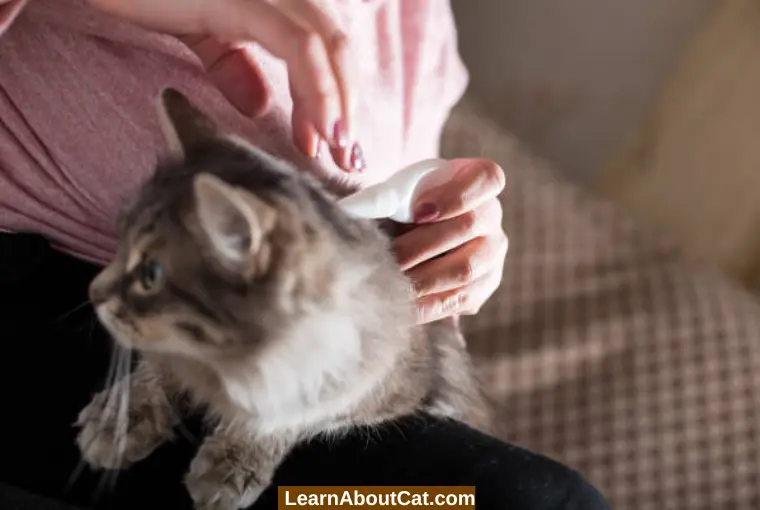
1. Flea Allergy Dermatitis
To stop blood clotting, flea saliva includes an anticoagulant. To aid in feeding, fleas will spit into their bite site. Some cats have severe itching because of an allergy to saliva. The scabbing, hair loss and skin irritation caused by flea saliva can make cats ill.
2. Cats with Tapeworms
Cats can get tapeworms from fleas frequently while being groomed. Your cat may get tapeworms if it eats an infected flea. With their sharp, hook-like mouthparts, tapeworms cling to your cat’s intestines, where they develop and rob it of nutrition. Your cat’s rear can have worm fragments adhered to it.
When examined closely, these fragments, which initially seem to be white rice grains, are tapeworm egg packages. These packets’ outer coverings dry off, releasing their eggs into the air for a flea to ingest and begin the cycle all over again.
3. Anaemia
Fleas are parasitic bloodsuckers. The flea bites the skin with its mouthparts and feeds on capillary blood. Significant blood loss may occur in cats or kittens with severe flea infestation.
Anaemia is a consequence of blood loss. Weakness and inadequate oxygenation of essential organs are symptoms of anaemia. In extreme cases of anaemia, organ failure and death are visible.
4. Cat Scratch Disease and Bartonellosis
When infected fleas deposit their excrement directly on your cat, they can become infected with the bacterium Bartonella by consuming flea droppings. The Bartonella bacteria thrive in this environment of intimate contact between flea droppings and your cat’s skin.
Bartonella bacteria have been related to various feline medical issues, including heart disease, eye inflammation, and oral and gum disease. Cats may carry the bacteria in their bodies for up to a year, which raises the possibility that they could infect other fleas and cats with it or even expose humans to cat scratch illness.
Frequently Asked Questions
Will fleas on cats go away on their own?
You might wonder whether fleas will eventually go away. Although some fleas can last for two to three weeks, others can live up to 12 months on a host, so it is unlikely that the fleas will just disappear by themselves.
A flea infestation can also last for a long time if its eggs are laid in carpet, bedding, or gardens.
Does vinegar stop fleas?
No, fleas can’t be killed by vinegar, although it can aid in deterring them. So, if you rub vinegar on your pet’s body, it won’t bother them anymore because they don’t enjoy the taste or odour of it. Fill a sprayer bottle with vinegar; spray it on your pet’s fur after diluting it.
What’s the best homemade flea killer?
Making an organic spray is the best home treatment for getting rid of fleas, deterring them, and preventing them. The good thing is that, unlike pesticides, natural sprays are harmless for your pets. The components consist of the following:
· Vinegar, 4 litres
· Distilled water, 2 litres
· 500 ml of lime juice
· Extract of witch hazel 250 ml
Where do fleas hide on cats?
There are several areas that fleas prefer to hide in, including the neck, hind legs, lower back, and base of the tail.
What do flea bites look like?
A fleabite’s appearance is pretty distinctive. They appear as small, red bumps in clusters of three or four or in a straight line.
In most cases, these bites are found around the legs or ankles, where you may notice a red “halo” around the bite centre.
What happens when a flea bites a cat?
A flea bite may trigger an immune response in your cat because flea saliva can enter the skin and cause it to react.
Hair loss and skin infections can result from intense skin irritation that spreads beyond the bite spots, leading to hair loss on the tail, belly and inner thighs.
Can cats get sick from flea bites?
Feline flea saliva can cause hair loss, skin inflammation, and scabbing. It is possible to develop symptoms from just a single flea bite, so even mild infestations can be problematic.
How do indoor cats get fleas?
Fleas usually enter your house via your pet or the family dog after spending time outdoors. There are also other sources of fleas for cats, including neighbouring pets and surrounding wildlife, such as birds, rabbits, guinea pigs, and skunks, who can carry fleas.
Wrap Up!
Even though fighting a flea infestation might feel daunting, you have access to various options. This includes washing hot water, cleaning a tidy yard, and giving your pet flea treatment. The best method for getting rid of fleas and avoiding further infestations is a mix of approaches.
Related Posts:
- Best Flea Treatment for Kittens Under 12 Weeks
- Cat Keeps Shaking Head But Has No Mites: Why And What to Do?
- Why My Cat Has Scabs on Its Neck But No Fleas?
- How Long After Deworming A Cat Are The Worms Gone?
- My Cat Has Worms How Do I Clean My House?
- How To Get Rid of Skin Tags on Cats?
- Dirty Cat Ears vs Ear Mites: How to Know the Difference?
- Why Does My Cat Have Bald Spots And Sores?
- Cat Losing Hair On Back Near Tail – Causes And Prevention
Who is Isabella?
My name is Isabella, and I am a dedicated and knowledgeable cat enthusiast. With years of experience caring for cats and a deep love for felines, I made a mission to help other cat lovers navigate the challenges of cat ownership.


